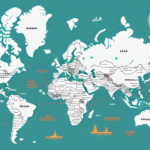Understanding the UPS Shipping Rate Hike in Canada
UPS, one of the world's largest courier companies, has recently implemented a significant increase in shipping rates for its Canadian customers. This change has raised concerns and questions about the underlying reasons for the sudden price hike. This article delves into the various factors contributing to this increase and explores how businesses and individuals can navigate the evolving shipping landscape.
Factors Driving UPS Shipping Rate Increases
Rising Transportation and Labor Costs
The primary driver behind the UPS shipping rate increase in Canada is the escalating costs of transportation and labor. With fuel prices surging and the cost of shipping equipment on the rise, UPS has been compelled to adjust its pricing structure to maintain profitability. Additionally, labor shortages and increased wages have further contributed to higher operational expenses.
Increased Shipping Volumes
The boom in e-commerce has led to a surge in shipping volumes, putting additional strain on logistics networks. As more consumers shop online, the demand for shipping services has skyrocketed, forcing UPS to scale its operations rapidly. This heightened demand has resulted in higher shipping costs due to the increased need for resources and manpower.
Impact of the COVID-19 Pandemic
The COVID-19 pandemic has had a profound impact on global supply chains, causing disruptions that have directly affected UPS's shipping rates. Supply chain interruptions have led to shortages of shipping containers and delays in transportation, compelling UPS to seek alternative routes and methods. These adjustments have inevitably increased operational costs, which are reflected in higher shipping prices.
Fuel Costs
Fuel prices are a significant component of shipping costs. Fluctuations in global oil prices have a direct effect on the cost of transportation. As fuel prices rise, UPS absorbs these additional expenses to maintain service levels, passing the costs onto customers through increased shipping rates.
Policy and Economic Influences on Shipping Rates
United States-Mexico-Canada Agreement (USMCA)
The USMCA, a free trade agreement signed in 2018, has reshaped cross-border shipping dynamics between the United States, Mexico, and Canada. While the agreement has streamlined certain processes, it has also introduced stricter regulations and compliance requirements. These changes have led to increased operational costs for shipping companies like UPS, contributing to higher shipping rates.
Tariffs and Taxes
Tariffs and taxes imposed on imported goods have a direct impact on shipping costs. When goods are shipped from the United States to Canada, tariffs can increase the overall cost of shipping. UPS, in turn, incorporates these additional expenses into their shipping rates, making international shipping more expensive for customers.
Exchange Rate Fluctuations
Exchange rate volatility between the US Dollar and Canadian Dollar affects the cost structure of shipping operations. A weaker Canadian Dollar means that UPS incurs higher costs when operating in Canada, costs that are subsequently passed on to customers through increased shipping rates.
Comparing UPS with Industry Competitors
FedEx and DHL Rate Increases
UPS is not alone in raising shipping rates; competitors like FedEx and DHL have also adjusted their pricing structures in recent years. However, UPS's rate increases have been more pronounced, impacting customers to a greater extent. Understanding how UPS's rate hikes compare to its competitors can help customers make informed shipping decisions.
UPS's Investments in Technology and Sustainability
UPS has heavily invested in automation, robotics, and sustainable practices to enhance delivery efficiency and reduce its environmental footprint. While these investments position UPS as a forward-thinking company, they also contribute to increased operational costs. These costs are, in part, why UPS's shipping rates have seen more substantial increases compared to some of its competitors.
Mitigating High Shipping Rates: Strategies for Customers
Exploring Alternative Shipping Options
Customers looking to reduce shipping expenses can consider alternative carriers or smaller courier services that may offer more competitive rates. Comparing prices and services between different shipping providers can lead to significant cost savings.
Negotiating Better Rates with UPS
Businesses that regularly use UPS shipping services may be eligible for volume discounts. Engaging in negotiations with UPS to secure better rates based on shipment volumes can help mitigate the impact of rate increases.
Adapting for Small and Medium-Sized Enterprises (SMEs)
SMEs can adopt various strategies to cope with increased shipping costs, such as consolidating shipments, optimizing packaging to reduce weight and dimensions, and leveraging shipping tools and software to enhance efficiency.
The Role of International Trade Complexities
Customs Regulations and Import Taxes
Navigating international trade regulations, including customs and import taxes, adds another layer of complexity to shipping operations. UPS must comply with these regulations, which often entails additional paperwork and compliance costs that are reflected in shipping rates.
Exchange Rate Impact on Shipping Costs
Fluctuating exchange rates can significantly affect the cost of importing goods. When the Canadian Dollar depreciates against the US Dollar, the cost of shipping goods from the US to Canada increases, leading UPS to adjust its rates accordingly.
Future Outlook for UPS Shipping Rates in Canada
Predicting the trajectory of UPS's shipping rates in Canada involves considering various dynamic factors, including economic conditions, fuel prices, and evolving trade policies. While rate increases may continue due to persistent operational costs and investments, customers can expect UPS to innovate and possibly introduce more flexible pricing models to retain competitiveness.
Conclusion
The increase in UPS shipping rates in Canada is a multifaceted issue influenced by rising operational costs, policy changes, economic factors, and industry competition. By understanding these underlying factors and exploring strategic alternatives, customers can better navigate the challenges posed by higher shipping expenses.






















